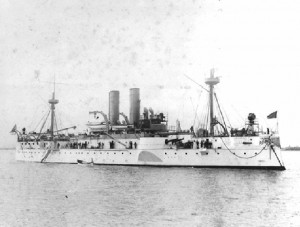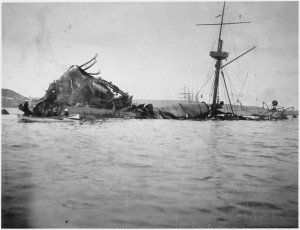Good morning.
Whitewater’s week ends with a chance of scattered flurries and a high of twenty-four. We’ll have 10h 34m of sunlight, 11h 32m of daylight, with a waxing crescent moon.
On 2.15.1898, a explosion still remembered today, as a prelude to war:

A massive explosion of unknown origin sinks the battleship USS Maine in Cuba’s Havana harbor, killing 260 of the fewer than 400 American crew members aboard.
One of the first American battleships, the Maine weighed more than 6,000 tons and was built at a cost of more than $2 million. Ostensibly on a friendly visit, theMaine had been sent to Cuba to protect the interests of Americans there after a rebellion against Spanish rule broke out in Havana in January.
An official U.S. Naval Court of Inquiry ruled in March that the ship was blown up by a mine, without directly placing the blame on Spain. Much of Congress and a majority of the American public expressed little doubt that Spain was responsible and called for a declaration of war.
Subsequent diplomatic failures to resolve the Maine matter, coupled with United States indignation over Spain’s brutal suppression of the Cuban rebellion and continued losses to American investment, led to the outbreak of the Spanish-American War in April 1898.
Within three months, the United States had decisively defeated Spanish forces on land and sea, and in August an armistice halted the fighting. On December 12, 1898, the Treaty of Paris was signed between the United States and Spain, officially ending the Spanish-American War and granting the United States its first overseas empire with the ceding of such former Spanish possessions as Puerto Rico, Guam, and the Philippines.
In 1976, a team of American naval investigators concluded that the Maineexplosion was likely caused by a fire that ignited its ammunition stocks, not by a Spanish mine or act of sabotage.
Google-a-Day poses a geography question: “In the Russian monument of the founder of Moscow, which hand is he holding out to the side?”

